John Fradkin first got into the breeding game in 1997 when he decided to retire Ultrafleet, a mare he had purchased for $10,500 at the 1993 Keeneland September Yearling Sale. Little did he know then that the mare, unremarkable on the track, would become a big success in the breeding shed, producing Breeders' Cup Turf Sprint winner California Flag and multiple graded stakes winner Cambiocorsa, who became the granddam of 2018 European Horse of the Year Roaring Lion. Ultrafleet is also granddam of recent El Camino Real Derby victor Rombauer. Fradkin is looking forward to an exciting year ahead with Rombauer, a winner on the turf, grade-1 placed on the dirt, and now a stakes winner on the synthetic.
Fradkin spoke with BloodHorse MarketWatch about Rombauer's recent success, his small-commercial breeding operation, and his exceptional broodmare, Ultrafleet.
MarketWatch: How did you become involved with Thoroughbreds?
John Fradkin: I was an institutional bond salesman and living on the West Coast. When you are in that business, you are keeping Wall Street hours and you are done at 2:00 p.m. One of the guys I worked with grew up near Santa Anita Park and knew how to handicap. We were two guys in our late 20s looking for something to do after work so he brought me to the track and taught me how to handicap. We would go to the track every once in a while and so I learned the game from the handicapping angle first. After a while I guess I thought it would make me a better handicapper if I learned some of the inside stuff by being a racehorse owner. So in 1993 I decided to claim a horse and that's how I got into the owner's side of it. Ron Ellis was our trainer at the time. We claimed an old 7-year-old gelding named Ruff Hombre. He finished dead last in the race we claimed him out of and he had a nice big swollen ankle. Ron took a couple of months getting him back to the races and sure enough he won his first race with me as an owner and I was hooked.
MW: I see that Rombauer's dam Cashmere was also a homebred for you. What is the story behind her dam, Ultrafleet?
JF: I decided to take the winnings from that first win with Ruff Hombre and my wife (Diane) and I went to the 1993 Keeneland September Sale. We didn't have a clue what we were doing but we hired a gentleman to be our bloodstock agent, and he walked us around the sale, and we wound up buying a yearling filly from the Taylor Made consignment by Afleet. She was a little tiny thing, small and skinny, but also very correct. I’m sure I was the only bidder. We bought her for $10,500 and then brought her out to California, broke her, got her going, and gave her to Ron Ellis. She was not a good racehorse though so we just decided to retire her and made her a broodmare. And then honestly, we just got very lucky because Ultrafleet turned into a fantastic broodmare. She produced Cambiocorsa, who was famous for winning six in a row down the hill at Santa Anita, and California Flag, who won a Breeders' Cup race. She just turned into a jewel of a broodmare. It's quite a family if you look at it now. I call it the Ultrafleet family. We don't own Cambiocorsa or her offspring but we follow the family closely. Cambiocorsa has been bred to great stallions and has produced many good runners. Her daughter Vionnet was grade-1 placed and then she (Vionnet) produced Roaring Lion, who had quite a career. He was the champion 3-year-old in Europe (and 2018 Cartier Horse of the Year).

MW: Do you currently own any of Rombauer's siblings?
JF: We do. We have a 2-year-old Strong Mandate filly who is with Eddie Woods in Ocala, and we have a Cairo Prince yearling colt. The Cairo Prince colt is a very pretty horse, probably the best looking horse we've ever bred. He might be a yearling sale candidate. He's with Ben Berger at Woodstock Farm in Lexington.
MW: How many broodmares do you currently own and where are they located?
JF: We have two. We've been breeding horses since 1997 so that's almost 25 years now. And in that time we've always typically had one, two, or three broodmares. We usually have one in Kentucky at Woodstock Farm and one in California at Old English Rancho.
MW: Do you keep the majority of horses you breed to race or do you sell them at public auction?
JF: Our intent is to sell. We breed to sell. When we do run one it's because for some reason we couldn't sell. I like to think of us as small-time commercial breeders and Rombauer has been an exception.
MW: As the breeder of Rombauer, you've seen him through all stages of development. Did you always find him to be an exciting prospect?
JF: We always thought he had a lot of potential. He was a good mover and intelligent. He wasn’t gigantic, he’s a very average-sized horse, and I think that was the one thing that made him less of a sales prospect than we would've liked. We often aim our horses for 2-year-old sales. We tend to breed horses that are better 2-year-old sale candidates than yearling sale candidates because they tend to be good movers but not as big size-wise as the yearling market demands. And Rombauer fell into that category. We sent him to Eddie Woods and he was aimed at the April OBS sale but when COVID broke out, Eddie told me he had no confidence that the sale was going to happen at all, and if it did it would be really delayed, which it was. But it was Eddie's suggestion that maybe we just run him instead of selling. The family has been really early anyway, Cashmere has had four foals to race, they're all winners, and they all won early. Her first baby won in his second start, and the second horse won in his first start, so we just figured we would run him, hopefully win early, and then plan to sell him at the track.

MW: What made you decide to keep Rombauer after he broke his maiden?
JF: When he won his first race in July, going a mile on the turf, he did something very special that day that I had seen maybe once before. That was that he came home in :22 and change. It's very rare for a 2-year-old to come home in :22 and change. It's almost unprecedented for a first-time starter to do that. That kind of stuck in my head, and I thought he might be something special, so we decided to stay in and not sell.
MW: It's fairly unique that Rombauer has now won on both the turf and synthetic, and is grade 1-placed on the dirt. What are the plans for Rombauer looking ahead to the rest of the year? He's a versatile horse.
JF: We have a lot of options. I hope he stays sound and healthy and this could be a fun year. I look forward to running in all kinds of races with him but it's kind of a chess game as to where you want to run. It's fun thinking about it. This is a year where the 3-year-old crop is very deep as there's lots of good horses, and so we will try to pick our spots carefully.
MW: Is this the first time you've bred a horse that could join the Derby trail?
JF: Yes. One interesting thing about Rombauer is that he's from a tremendous family but if you look at that family closely, 99% of the family's success has been on the turf. Rombauer is the first one who’s really been doing well on the dirt. His brother Treasure Trove runs fine on the dirt also, but Rombauer has really excelled. I have to hand it to my trainer Michael McCarthy because it was his idea to nominate Rombauer to the American Pharoah (G1) and I thank him for doing that. He said to me one morning last year, "I think the horse is training well on the dirt and the race is coming up light, so what do you think?" And I said, "Sure, if you think so." But when he asked me this question he had already nominated the horse for that race and that was something I would have never thought to do. We're on a different pathway now with this horse and it's pretty cool.










